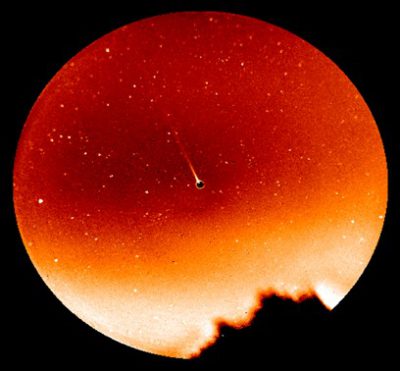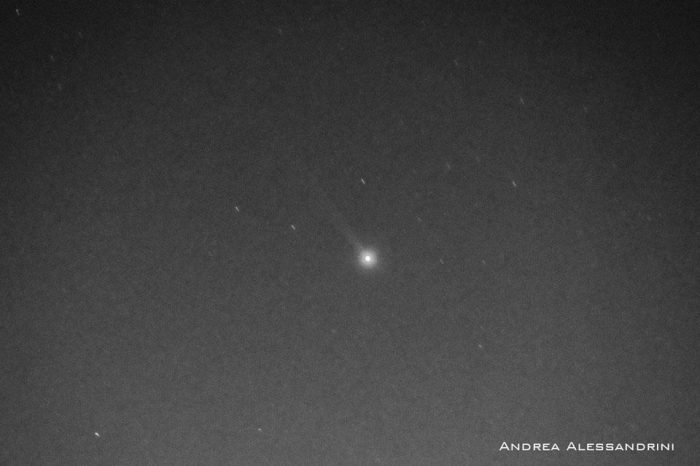What things have tails? Can you name any?
Cats and dogs, for sure. Tadpoles. Kangaroos have mighty ones. Geckos. (Question: Does a snake have a tail, or is that just its body?) And then there's comets.
Sure, their tails are very different than animal tails. On a comet, a tail is a trail of debris blown off its surface by solar wind (that's energized particles radiating out from the Sun). This debris, made of gas and dust, is lit by the Sun and looks like a long streak or tail. And you know what else has a tail?
The planet Mercury.
The story of Mercury's tail is similar to that of a comet. But more surprising. After all, this is a planet. Why is stuff getting blown off its surface?
Low gravity, near the Sun

An image showing Mercury's tail. (Jeff Baumgardner/Boston University)
Mercury's tail is caused by two things. Its proximity to the Sun and its low mass, and therefore low gravity.
Simply put, this tiny planet is constantly getting blasted by solar wind. Its weak gravity is no match against its power. So just as with comets, the solar wind can blow elements away.
Mercury doesn't have a thick atmosphere as Earth does—only a thin exosphere that is made of oxygen, sodium, helium, hydrogen, and potassium atoms. The planet's gravity is strong enough to have this exosphere, but not strong enough to bring these atoms together as a gas. Instead, they exist more as loose particles around the planet. As some particles from this exosphere are blown away by the wind, the Sun's energy causes the ones that are sodium atoms to glow. (This glowing is called ionization.)
And there you have it. Mercury's tail!
Since first being discovered in 2001, this phenomenon has been sighted more and more by astronomers. Of course, one thing that we don't know? If you pet Mercury, does it wag its tail? Maybe one day we can launch a PPP (planet-petting probe) and find out!
 This image shows us the 'tail' extending from Mercury. (Andrea Alessandrini/NASA)
This image shows us the 'tail' extending from Mercury. (Andrea Alessandrini/NASA)










I love this article !
It is interesting, new, funny and scientific ! Bravo.
My question : can I see Mercury’s tail with binoculars in the country’s sky ?
Merci !
Félix
😀
No it is not possible to see Mercury tail with a sodium filter.